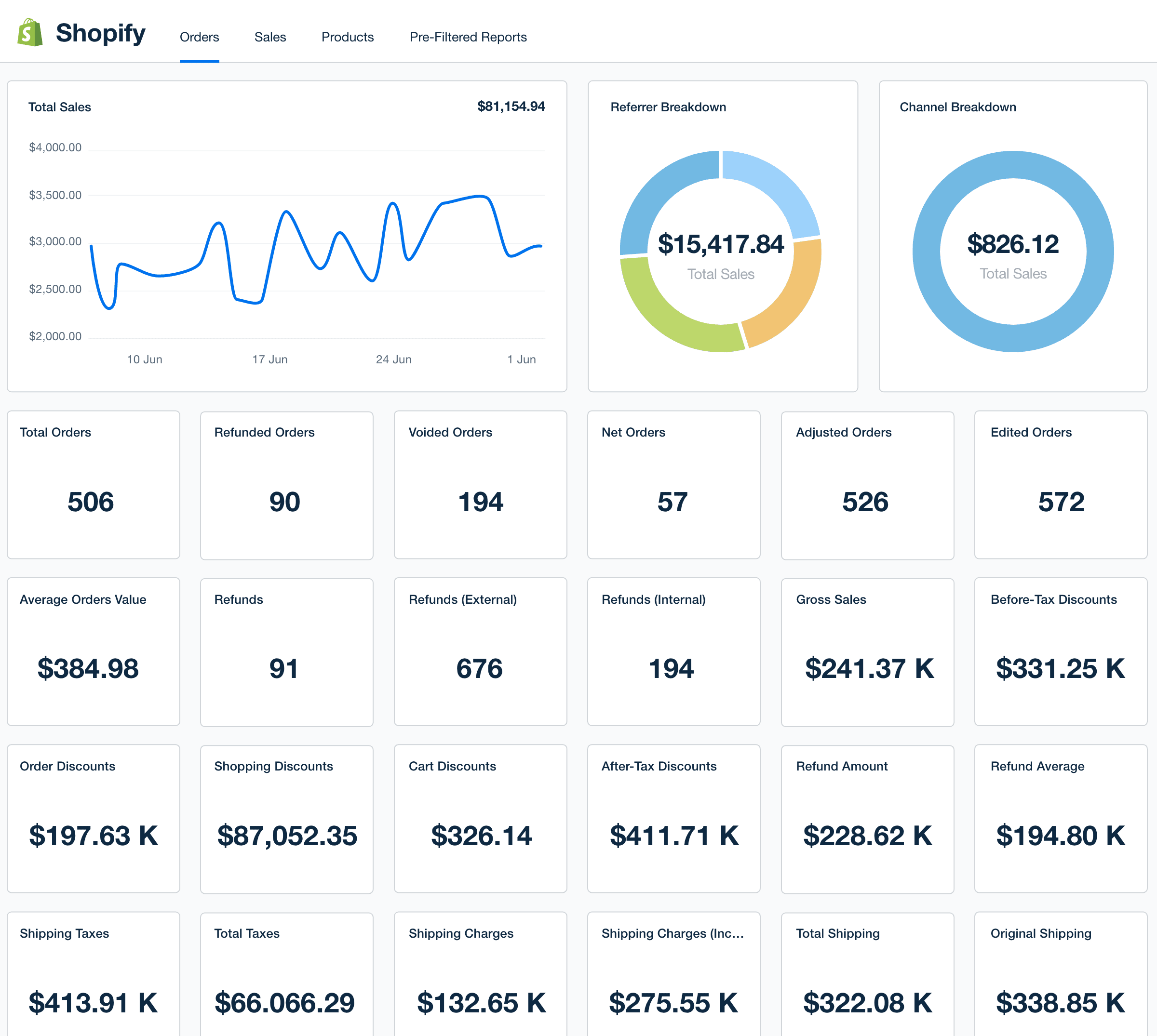
Shopify Analytics: Complete Buyer's Guide
Integrated solution that eliminates data fragmentation challenges
Shopify Analytics represents the evolution of native ecommerce analytics, positioning itself as the integrated solution that eliminates the data fragmentation challenges facing 87% of retailers[21][25]. Unlike third-party analytics platforms that require complex data synchronization, Shopify Analytics provides real-time insights directly within the merchant ecosystem, delivering actionable intelligence on sales velocity, customer behavior, and inventory optimization without the typical 6-9 month implementation timelines[47][58].
Market Position & Maturity
Market Standing
Shopify Analytics occupies a unique position as the native analytics solution within the world's second-largest ecommerce platform ecosystem, serving over 1.7 million merchants globally.
Company Maturity
The platform benefits from Shopify's market leadership in the SMB and mid-market ecommerce segments, with the parent company's consistent growth trajectory and expanding ecosystem providing a stable foundation for analytics innovation.
Growth Trajectory
Shopify's position as a public company (NYSE: SHOP) with strong financial performance offers buyers confidence in long-term platform viability and continued investment in analytics capabilities.
Industry Recognition
Industry recognition comes primarily through Shopify's broader platform achievements rather than standalone analytics awards, though the integration of AI capabilities through Sidekick represents significant technological advancement in conversational analytics[49][52][53].
Strategic Partnerships
Strategic partnerships within the Shopify ecosystem enhance the platform's capabilities, with integrations across payment processing, fulfillment, and marketing tools providing comprehensive data synthesis.
Longevity Assessment
The platform's maturity trajectory reflects Shopify's broader evolution from simple ecommerce hosting to comprehensive business platform, with analytics representing a natural extension of merchant services rather than a standalone product.
Proof of Capabilities
Customer Evidence
Documented Customer Transformations demonstrate Shopify Analytics' effectiveness across diverse business contexts. Incu, an electronics retailer, achieved a 300% year-over-year sales increase through AI-driven inventory automation[44][51].
Quantified Outcomes
Parachute saved $1 million through personalized messaging capabilities[44].
Case Study Analysis
Peter Sheppard Footwear achieved measurable basket value improvements through AI-driven complementary product recommendations[44].
Market Validation
Market adoption evidence includes successful deployments across various business models, from fashion retail to electronics, demonstrating the platform's versatility within the Shopify ecosystem.
Reference Customers
Ruby Friel, Founder of Still Life Story, attributes 50% year-over-year Christmas revenue growth to Shopify's analytics capabilities[47].
AI Technology
Shopify Analytics leverages a transformer-based NLP architecture through its Sidekick interface, enabling natural language query processing that correlates multiple data sources including weather patterns, local events, and historical sales data[49][52][53].
Architecture
The platform's unified data architecture operates natively within Shopify's infrastructure, eliminating the data synchronization delays common with third-party solutions.
Primary Competitors
Adobe Analytics, DataHawk
Competitive Advantages
Core Competitive Advantages center on ecosystem integration and deployment speed. The platform's native Shopify integration eliminates data synchronization delays common with third-party solutions, enabling 2-4 week implementations versus 6-9 months for enterprise alternatives[58].
Market Positioning
Market Positioning Strategy focuses on integrated simplicity versus specialized complexity.
Win/Loss Scenarios
Win Scenarios favor Shopify Analytics when organizations operate primarily within Shopify ecosystem with limited cross-platform requirements.
Key Features

Pros & Cons
Use Cases
Integrations
Pricing
Featured In Articles
Comprehensive analysis of Analytics for Ecommerce for Ecommerce businesses and online retailers. Expert evaluation of features, pricing, and implementation.
How We Researched This Guide
About This Guide: This comprehensive analysis is based on extensive competitive intelligence and real-world implementation data from leading AI vendors. StayModern updates this guide quarterly to reflect market developments and vendor performance changes.
59+ verified sources per analysis including official documentation, customer reviews, analyst reports, and industry publications.
- • Vendor documentation & whitepapers
- • Customer testimonials & case studies
- • Third-party analyst assessments
- • Industry benchmarking reports
Standardized assessment framework across 8 key dimensions for objective comparison.
- • Technology capabilities & architecture
- • Market position & customer evidence
- • Implementation experience & support
- • Pricing value & competitive position
Research is refreshed every 90 days to capture market changes and new vendor capabilities.
- • New product releases & features
- • Market positioning changes
- • Customer feedback integration
- • Competitive landscape shifts
Every claim is source-linked with direct citations to original materials for verification.
- • Clickable citation links
- • Original source attribution
- • Date stamps for currency
- • Quality score validation
Analysis follows systematic research protocols with consistent evaluation frameworks.
- • Standardized assessment criteria
- • Multi-source verification process
- • Consistent evaluation methodology
- • Quality assurance protocols
Buyer-focused analysis with transparent methodology and factual accuracy commitment.
- • Objective comparative analysis
- • Transparent research methodology
- • Factual accuracy commitment
- • Continuous quality improvement
Quality Commitment: If you find any inaccuracies in our analysis on this page, please contact us at research@staymodern.ai. We're committed to maintaining the highest standards of research integrity and will investigate and correct any issues promptly.